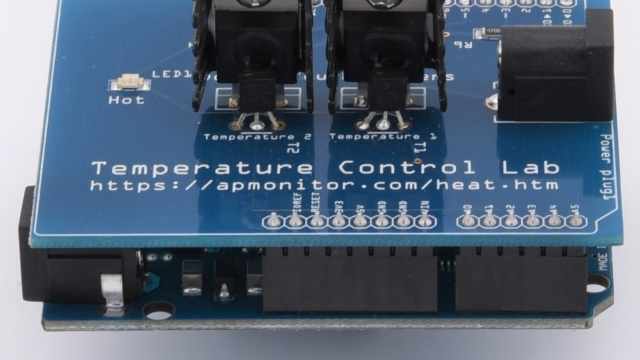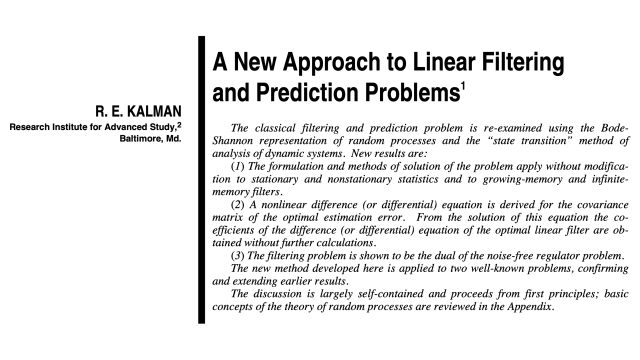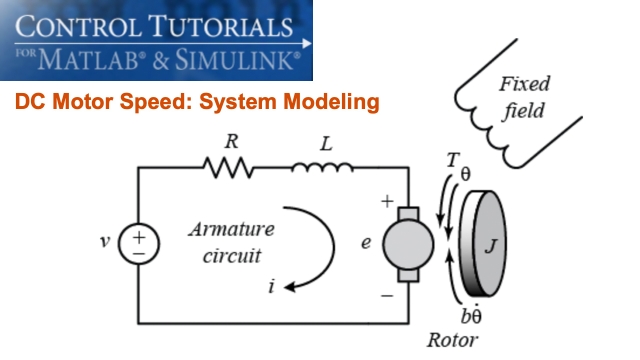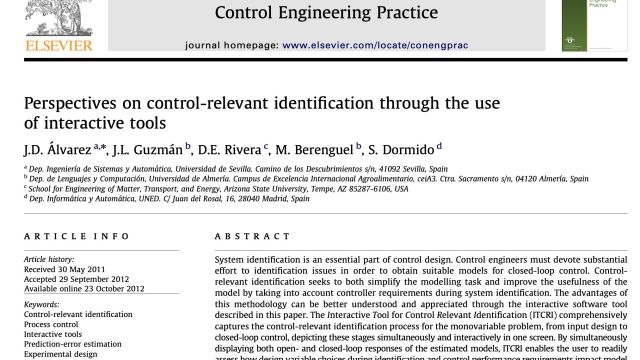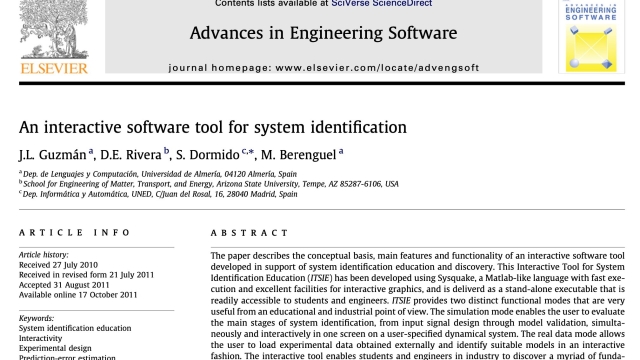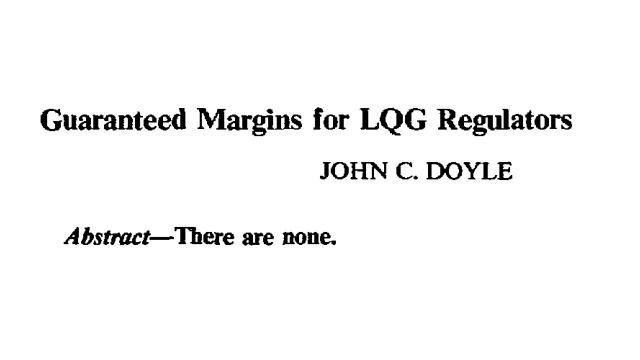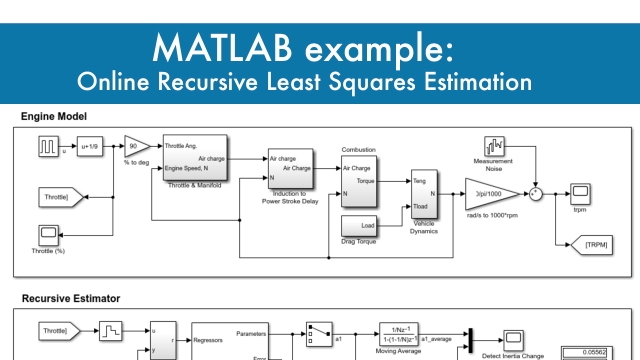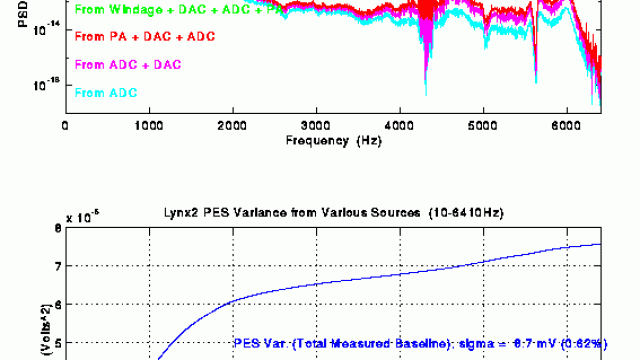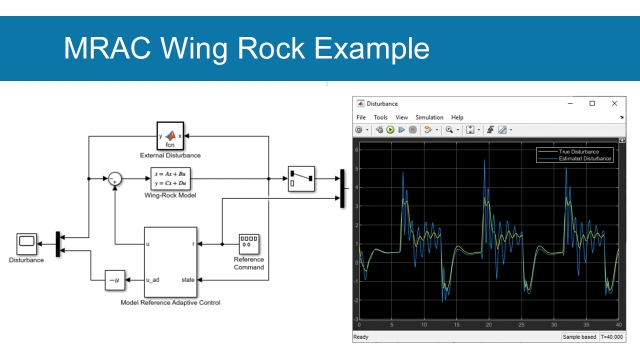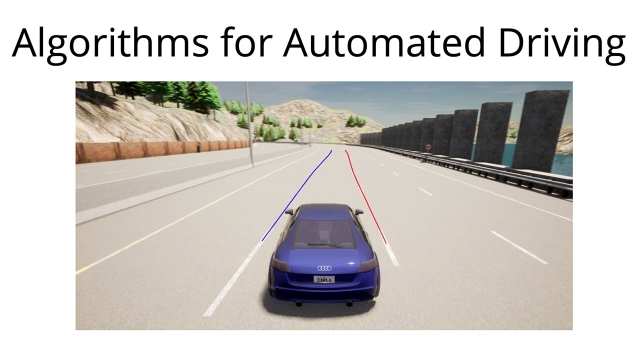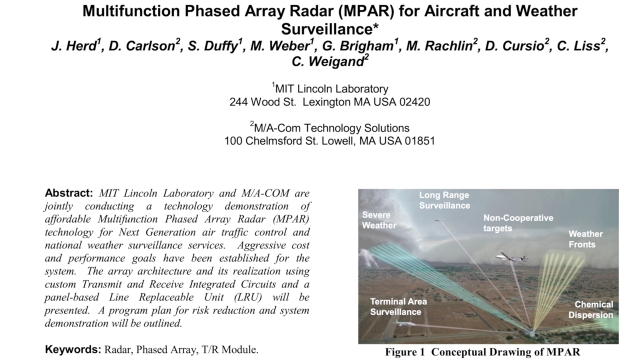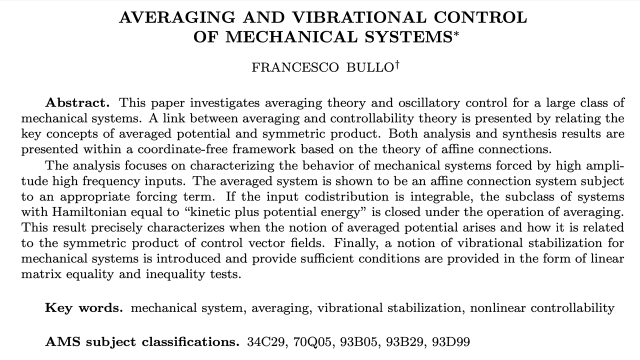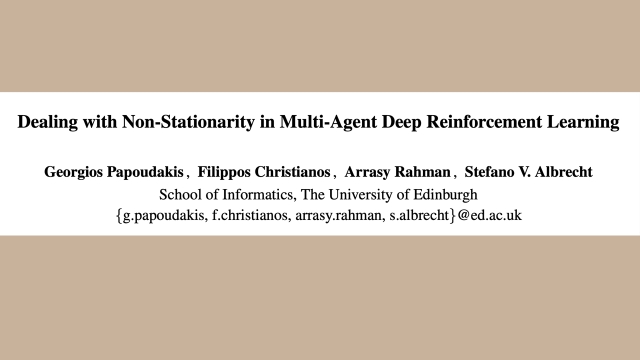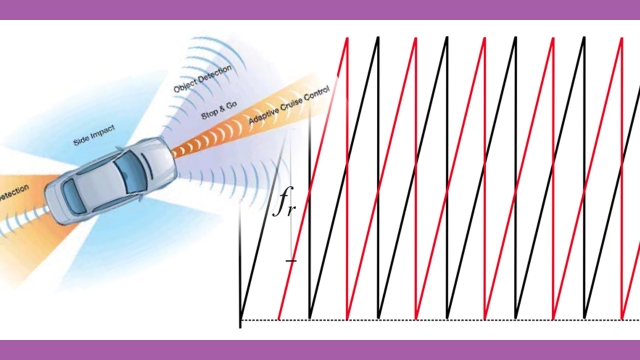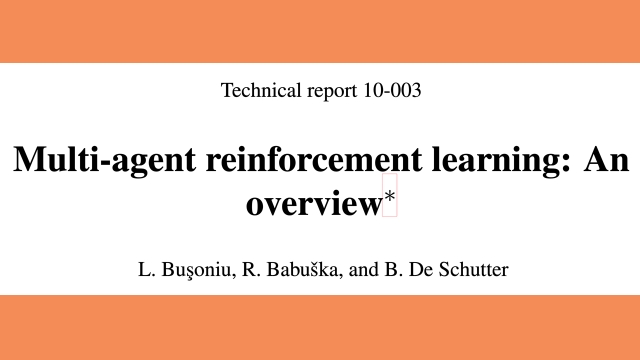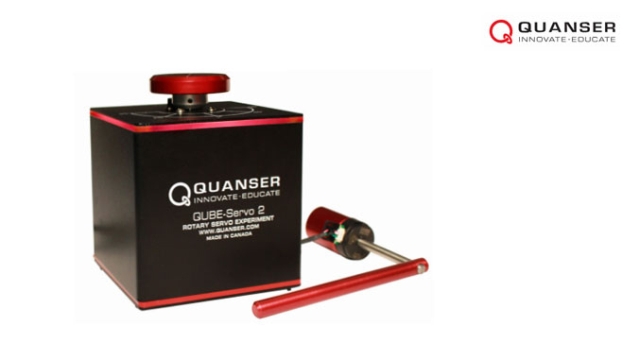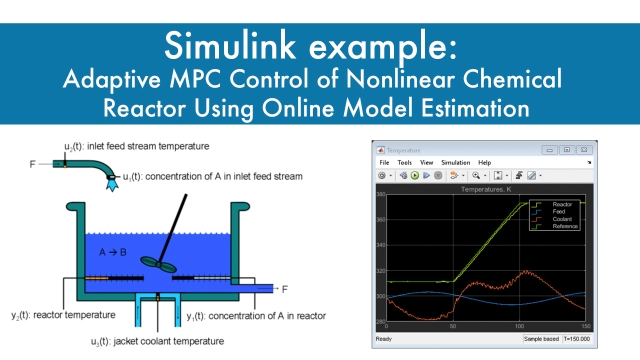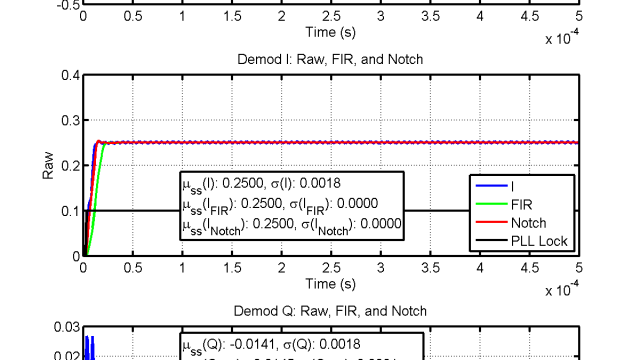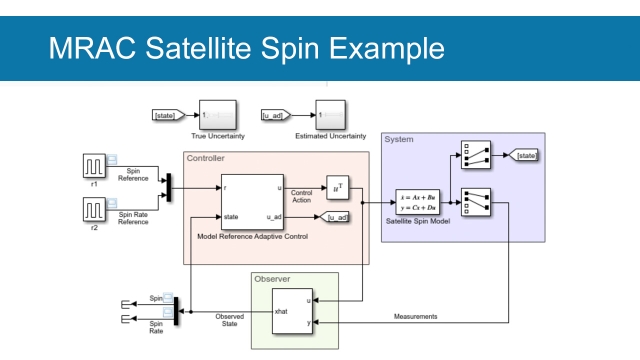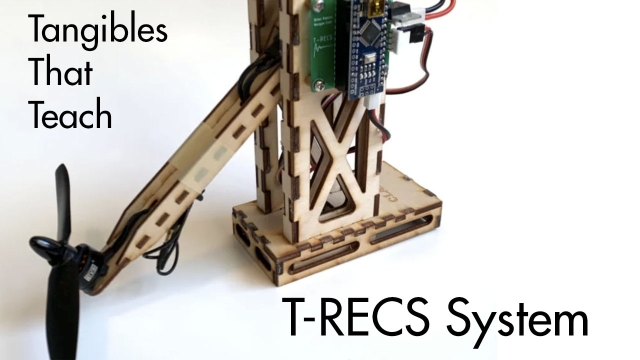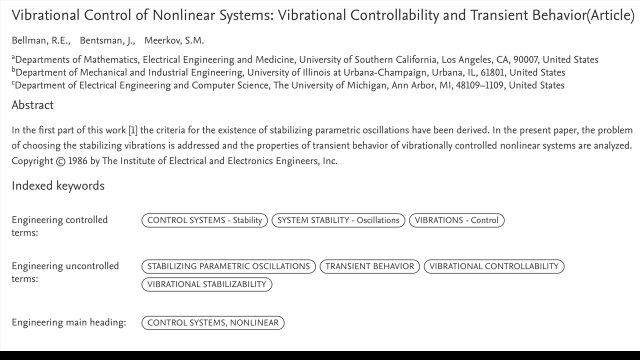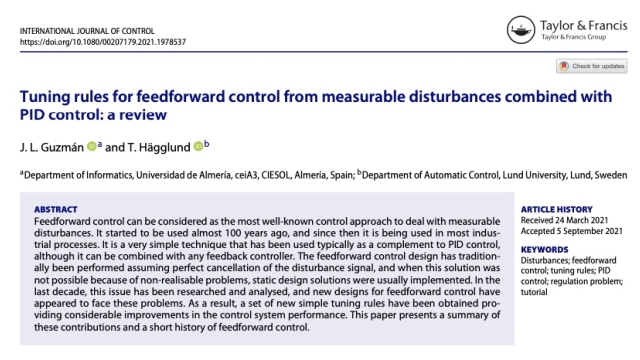
Temperature Control Lab (TCL)
The temperature control lab is an application of feedback control with an Arduino, an LED, two heaters, and two temperature sensors. The heater power output is adjusted to maintain a desired...
See MoreA New Approach to Linear Filtering and Prediction Problems
A transcription of R.E. Kalman's seminal paper. Transcribed by John Lukesh, 20 January 2002
The classical filtering and prediction problem is re-examined using the Bode- Shannon...
See MoreDC Motor Speed: System Modeling
This examples walks through modeling a simple DC motor in MATLAB.
See MoreMATLAB Example: Fault Detection Using an Extended Kalman Filter
This example shows how to use an extended Kalman filter for fault detection. The example uses an extended Kalman filter for online estimation of the friction of a simple DC motor...
See MorePerspectives on Control-Relevant Identification Through the Use of Interacti...
This paper presents a control-relevant identification methodology through an intuitive interactive tool called "Interactive Tool for Control Relevant Identification (ITCRI)". ITCRI...
See MoreManuscript about ITISE: an Interactive Software Tool for System Identificati...
The paper describes the conceptual basis, main features and functionality of an interactive software tool developed in support of system identification education and discovery.
This...
See MoreGuaranteed Margins for LQR Regulators
John Doyle's famous paper! He presents a counterexample that shows that are no guaranteed margins for LQG systems.
See MoreMATLAB Example: Online Recursive Least Squares Estimation
This example shows how to implement an online recursive least squares estimator. You estimate a nonlinear model of an internal combustion engine and use recursive least squares to detect...
See MoreA Tutorial on PES Pareto Methods for Analysis of Noise Propagation in Feedba...
This paper represents a tutorial on the so called PES Pareto methodology of analyzing the sources of noise in a feedback loop. Originally conceived for analyzing noise contributors in...
See MoreModel Reference Adaptive Control of Aircraft Undergoing Wing Rock
This example shows how to control roll and roll rate of a delta wing aircraft undergoing wing rock. For this example, the system model is unknown. Therefore, you use model reference adaptive...
See MoreAlgorithms for Automated Driving
Each chapter of this (mini-)book guides you in programming one important software component for automated driving. Currently, this book contains two chapters: Lane Detection, and Control...
See MoreMultifunction Phased Array Radar (MPAR) for Aircraft and Weather Surveillanc...
MIT Lincoln Laboratory and M/A-COM are jointly conducting a technology demonstration of affordable Multifunction Phased Array Radar (MPAR) technology for Next Generation air traffic control...
See MoreAveraging and Vibrational Control of Mechanical Systems
Abstract. This paper investigates averaging theory and oscillatory control for a large class of mechanical systems. A link between averaging and controllability theory is presented by...
See MoreDealing with Non-Stationarity in Multi-Agent Deep Reinforcement Learning
From the abstract
Recent developments in deep reinforcement learning are concerned with creating decision-making agents which can perform well in various complex domains. A particular...
See MoreFast chirp FMCW Radar in automotive applications
FMCW (frequency-modulated continuous wave radar) modulations have been popularly implemented in the automotive radar applications. This document demonstrates system requirement for a new...
See MoreMulti-agent reinforcement learning: An overview
From the abstract:
Multi-agent systems can be used to address problems in a variety of do- mains, including robotics, distributed control, telecommunications, and economics. The complexity...
See MoreQuanser QUBE-Servo 2: Low-cost Teaching Platform for Controls
The Quanser QUBE-Servo 2 is a fully integrated, modular servomotor lab experiment designed for teaching mechatronics and control concepts at the undergraduate level. Ideal for teaching speed...
See MoreSimulink example: Adaptive MPC Control of Nonlinear Chemical Reactor Using O...
This example shows how to use an Adaptive MPC controller to control a nonlinear continuous stirred tank reactor (CSTR) as it transitions from low conversion rate to high conversion rate.
A...
See MoreThe Demod Squad: A Tutorial on the Utility and Methodologies for Using Modul...
This paper is a brief tutorial on methods for using modulated signals in feedback loops, and especially of the different methods and trade offs used for demodulating those signals to get...
See MoreBenchmarking tools for a priori identifiability analysis
Recent review and benchmark of software tools that can be used for assess the structural identifiability of dynamical systems
See MoreModel Reference Adaptive Control of Satellite Spin
This example shows how to control satellite spin using model reference adaptive control (MRAC) to make the unknown controlled system match an ideal reference model. The satellite system is...
See MoreExperimental evaluation of feedforward tuning rules
This paper presents a practical comparison for some of the most relevant tuning rules for feedforward compensators that have been published in the recent years. The work is focused on the...
See MoreT-RECS System
The Transportable Rotorcraft Electronic Control System (T-RECS) is a collection of components that can be built into a rotorcraft demonstrator. This hardware can be used as a test bed to...
See MoreVibrational control of nonlinear systems: Vibrational controllability and tr...
In the first part of this work, the criteria for the existence of stabilizing parametric oscillations have been derived. In the present paper, the problem of choosing the stabilizing...
See MoreFeedforward tuning rules for measurable disturbances with PID control: a tut...
Feedforward control can be considered as the most well-known control approach to deal with measurable disturbances. It started to be used almost 100 years ago, and since then it is being...
See More
